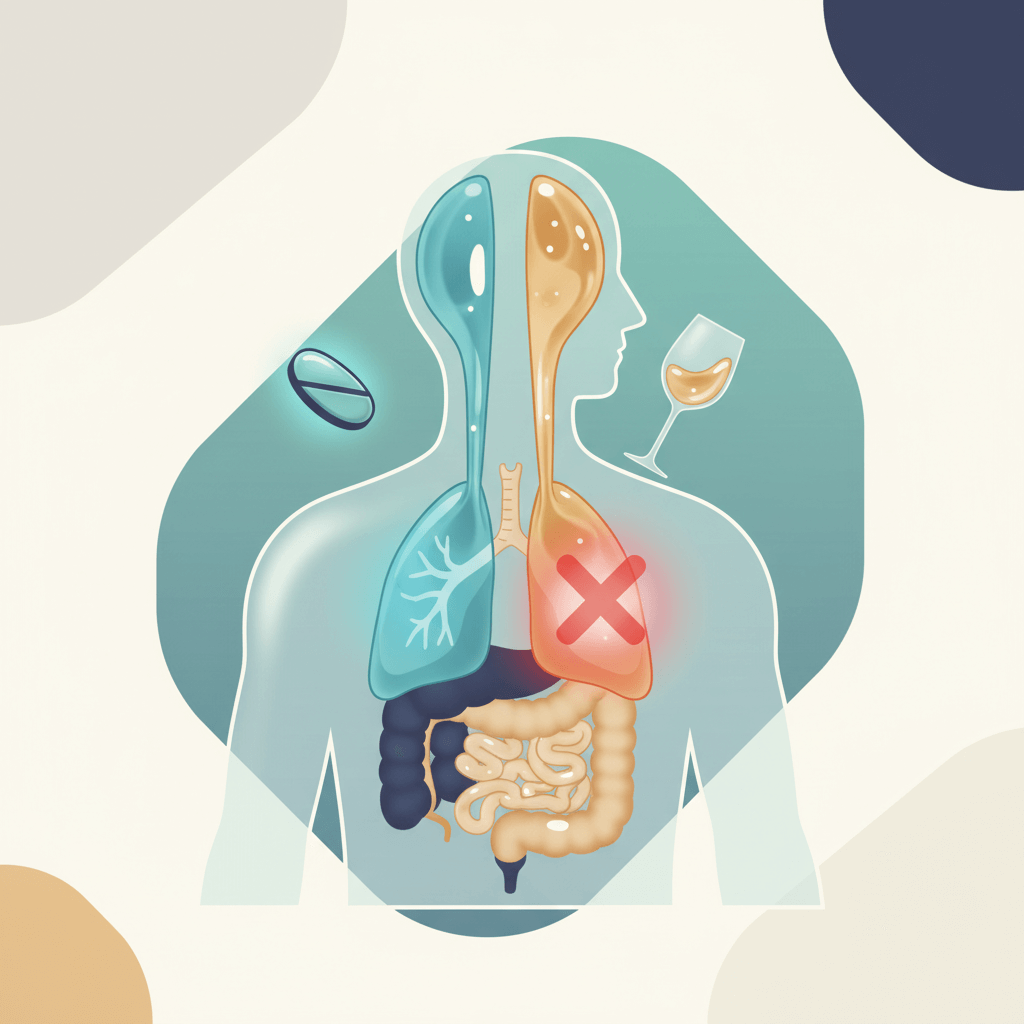Gambling has changed faster in the last five years than in the last fifty. Coffeezilla’s recent video shows how far this shift has gone. It shows how gambling mechanics have entered phones, games, social media apps, and financial tools. It shows how young people now face risk systems that look like games but behave like casinos. It shows how companies place gambling features into daily life to keep people hooked. It shows how this strategy works on adults, teens, and even children.
The video highlights a simple truth: you can gamble almost anywhere now. You can gamble on sports, video games, political events, weather, influencer drama, and random outcomes that should have nothing to do with money. There are apps that let people bet on the color of the next car that drives by a camera. There are markets where people gamble on lawsuits, influencer scandals, relationships, and live events. Teenagers use skins and loot boxes that mimic slot machines. Roblox and other games expose children to gambling patterns long before they know what a “bet” means. Some platforms use loopholes that let people as young as eighteen gamble on systems that are easy to hide and hard to regulate.
Silicon Valley plays a major role in this spread. Tech companies discovered that gambling mechanics increase engagement. They learned that random rewards trigger strong emotional spikes. They learned that fast outcomes keep people glued to screens. They now use these mechanics across social platforms, games, finance apps, and entertainment websites. The result is simple: millions of people face a gambling-style reward loop every time they open their phone. This includes children who play mobile games with bright colors, spinning wheels, and paid randomness. It includes adults who scroll through apps that push rapid wins and quick losses.
Sports betting adds more pressure. Many states now allow sports gambling. Ads run across major events. Influencers promote betting codes to large audiences. TikTok floods younger viewers with betting tricks, “once-in-a-lifetime picks,” and unrealistic success stories. The legal age for many sports betting apps is eighteen, which places teens and young adults at direct risk. Regulation remains limited. Oversight remains weak. Current political priorities suggest that gambling companies will continue to operate with wide freedom and minimal guardrails. This creates harm that families may not see until it becomes severe.
Financial markets also show gambling behavior. Some platforms have turned trading into quick bets. Users swipe, tap, and place high-risk positions with the same mechanics used in casino apps. Flashy colors, confetti animations, and instant feedback make risky trades feel like games. This creates the same problem we see in gambling: fast decisions, emotional reactions, and sudden losses.
These systems normalize addiction. People grow used to phones that encourage impulsive behavior. They grow used to chasing fast results. They grow used to seeing risk as entertainment. Many men who enter treatment at Prescott House describe years of this exposure. They grew up using apps with random rewards. They used games that trained them to expect sudden wins. They used social platforms that rewarded quick reactions. By the time gambling became legal in many states, the pattern felt normal. The shift was smooth and easy because the brain was already trained to accept fast-paced reward cycles.
This is where Prescott House steps in. Our long-term program breaks this cycle. We separate men from their phones. We remove the constant stream of triggers and gambling cues. We create a safe space with structure and routine. We help men rebuild attention, emotional control, and clear thinking. We teach them that these systems are not normal. We show them how gambling mechanics hide inside daily technology. We help them return to the world with strong boundaries and new habits. A slow and steady tech detox gives them time to reset their minds and rebuild their lives.
Why Gambling Mechanics Spread Everywhere
Gambling mechanics did not spread by accident. They spread because they work. Companies learned that random rewards keep people active, emotional, and invested. The goal is not to help the user. The goal is to keep the user on the platform. The systems use psychology, speed, and constant stimulation to shape behavior. Coffeezilla’s video points to this pattern clearly, and the pattern matches what we see across technology.
A. Random Rewards Trigger Fast Emotional Spikes
Random rewards affect the brain in a direct way. The brain reacts strongly to outcomes that feel uncertain. A random win creates a sharper emotional spike than a planned reward. This spike trains the brain to want more. Companies use this pattern because it drives repeated use.
This is why loot boxes, spins, crates, and “mystery drops” feel exciting even when the prize is digital. The emotional reaction is real. Young users learn this reaction early. Many carry this reaction into adulthood and into real-money systems.

B. Fast Outcomes Increase Impulsive Behavior
Rapid outcomes make gambling more harmful. Slow games give people time to think. Fast systems push quick choices with little reflection. Many gambling apps now offer rapid bets, instant cashouts, quick parlay options, and fast-moving odds. These features keep the user in a loop.
The loop looks like this:
- See a new bet
- Feel a fast urge
- Place the bet
- Watch the result
- Repeat
This loop mirrors slot machines. It also mirrors many mobile games.
C. Tech Companies Use Reward Loops to Drive Profit
Silicon Valley saw the power of random rewards in early mobile games. They saw how children responded to bright colors, streak bonuses, and daily prizes. They noticed that these features kept users online longer than usual. They expanded these mechanics into social apps, finance apps, and entertainment platforms.
The logic is simple:
Longer usage → more ads → more revenue.
The ethics are weak. The impact on mental health is strong.
D. Children Get Exposed Before They Understand the Risk
Roblox, Fortnite, FIFA, and similar platforms use systems that mirror gambling. These systems include random drops, microtransactions, and paid randomness. Children see these features as play. They learn the emotional cycle early. They learn to chase the next win. They learn to spend money to unlock chance-based outcomes.
The danger is clear:
The child is not “gambling,” but the brain learns the same pattern.
When those children grow up and see sports betting ads everywhere, the transition is smooth. The brain knows the feeling. The brain is ready for the next step.
E. Social Media Normalizes Constant Risk
TikTok spreads gambling content like wildfire. Algorithms push betting clips, picks, predictions, wins, losses, and influencer promos. These clips target young men. They show fast wins, big payouts, and exaggerated confidence. They hide the losses.
The effect is simple:
Risk looks normal.
Risk looks fun.
Risk looks like part of daily life.
F. Legal Loopholes Expand Access
Many betting platforms operate in states with low oversight. Some states set the gambling age at eighteen. Some sites use “sweepstakes” language to bypass tighter rules. Others use crypto-based tools to avoid restrictions that apply to banks. This creates a path for teenagers, young adults, and vulnerable users to access systems they are not ready to handle.
Coffeezilla shows how large platforms use these gaps. The gaps create high profit. They also create high harm.
G. The Financial Sector Adopts Gambling Features
Trading apps use designs that resemble casinos. They use flashing colors, sound effects, and confetti to reward trades. Many users start with no training. They learn high-risk behavior from the interface itself. Social trading features encourage copycat decisions. The entire system pushes fast emotions, not steady planning.
This makes financial markets feel like games. This blurs the line between investing and gambling. It also increases impulsive decisions and emotional reactions.
H. Normalization Forms Before People Notice It
People grow used to these systems because exposure starts early and continues every day. They feel normal because phones deliver the same patterns across many apps. The user sees chance-based rewards in games, entertainment apps, social feeds, trading apps, and betting platforms. Every platform uses similar patterns. Every platform rewards impulsive action.
By the time a user faces real-money gambling, the brain already accepts the pattern. It does not feel new. It does not feel alarming. It feels familiar.
This is what makes the modern gambling explosion so powerful. The user does not see a separate danger. The user sees the next step in a pattern that the tech world has trained into them.
The Cultural Shift That Made Gambling Feel Normal
The rise of gambling is not only a tech issue. It is a cultural shift. Coffeezilla’s video highlights how fast this shift took place. The change happened so quickly that many people did not notice it. The country now treats gambling as entertainment, lifestyle choice, and part of daily routine. This shift affects adults, teens, families, and communities.
A. Constant Exposure Makes Risk Feel Familiar
People see gambling everywhere now. Sports networks run betting ads nonstop. Influencers promote betting codes. Social platforms show highlight clips of big wins. Mobile games use gambling mechanics as core features. Even news outlets show betting content during major events.
When people see something every day, it feels normal.
When something feels normal, it feels safe.
This is the illusion.
The constant presence creates a false sense of control, even when the system is built to take money and attention.
B. Legalization Accelerates the Spread
Sports betting is legal in many states, and more states approve it each year. This creates huge pressure across the market. Companies compete for attention, users, and profit. They use heavy promotion, aggressive bonuses, and nonstop ads.
The issue is not legalization by itself.
The issue is speed.
The country legalized widespread gambling faster than it built public awareness. There were no strong guardrails. No clear warnings. No real preparation. The gambling industry grew faster than the oversight.
C. Weak Regulation Creates Risk for Young Adults
Minimum ages vary. Loopholes exist. Platforms operate across state lines. Some call themselves “gaming” instead of “gambling” to avoid stricter rules. Some use “virtual currency” that converts into cash through roundabout systems. The result is a chaotic environment that young adults can access with minimal friction.
Coffeezilla shows how companies use these gaps to increase reach.
The gaps make it harder for families to protect children and teens.
The gaps make it easier to hide harmful behavior.
When regulation falls behind, addiction rises ahead.
D. Social Media Encourages Fast Reactions, Not Careful Thinking
Social media platforms use short clips, fast swipes, and constant stimulation. These patterns train users to react quickly. They train users to chase the next hit of excitement. They reward impulsive choices.
Gambling fits perfectly into this model.
The same design principles drive:
- fast bets
- rapid markets
- “next-leg” suggestions
- instant pushes for new opportunities
- constant notifications
Social media sets the emotional rhythm. Gambling platforms sync to it.
E. Everything Moves Into a Reward Loop Model
Many modern apps use the same formula:
- Present a risk.
- Deliver a fast outcome.
- Trigger an emotional response.
- Repeat.
This structure appears in:
- betting apps
- mobile games
- social media feeds
- crypto platforms
- day-trading apps
- entertainment apps
- challenge-based platforms
- simulation games
- influencer promotion channels
It is the same foundation: keep the user hooked with rapid emotional spikes.
Companies use this loop because it works on a large scale. It boosts screen time, spending, and engagement. It trains the user to return again and again.
F. Even “Legitimate” Markets Adopt Gambling Language
Financial markets now mirror gambling behavior. People trade based on hype cycles, drama events, and emotional reactions. Marketing uses words like “play,” “instant,” “double,” and “jackpot.” Interfaces push movement with bright graphics and fast buttons. The model encourages impulsive entry and quick stakes.
This shift blurs the line between investing and betting.
The line becomes so thin that many people cannot tell the difference.
This confusion increases harm because users think they are “investing” when they are actually gambling with rapid-risk tools.
G. Society Confuses Freedom With Stability
Many people defend gambling expansion as “freedom of choice.”
But freedom without understanding does not create stability.
Freedom without awareness creates harm.
The country pushed access faster than education.
It pushed betting faster than public understanding.
It pushed entertainment faster than caution.
The result is a culture where risk feels harmless, even when it creates deep emotional and financial damage.
H. The Normalization of Harm
People now enter adulthood with an assumption that risk is part of daily life. Teenagers see gambling as entertainment. Young adults see it as a hobby. Influencers frame it as a lifestyle. Apps frame it as a reward. Games frame it as a challenge.
The shift is so complete that many people do not see gambling as a problem.
They see it as something everyone does.
This is the most dangerous part.
When harm becomes normal, prevention becomes difficult.
When risk becomes entertainment, addiction becomes easier to hide.

Why Long-Term Removal From Tech Is Essential
The gambling explosion shows how powerful modern reward systems have become. These systems shape attention, emotion, and daily habits. Phones deliver rapid spikes all day. Apps use bright visuals, fast outcomes, and random rewards to pull people back in. The brain learns this pattern. The brain expects this pattern. The brain depends on this pattern.
Short breaks do not reset the brain. A week off the phone cannot undo years of constant stimulation. A weekend detox cannot break loops that form from thousands of rapid cycles. The brain needs distance, time, and structure to calm down.
A. Tech Uses the Same Loops That Drive Gambling
Many apps use the same emotional triggers as gambling.
They use:
- fast rewards
- unpredictable outcomes
- constant notifications
- streaks
- variable reinforcement
- scrolling loops
These patterns narrow attention. They push impulsive behavior. They reduce patience. They increase emotional swings. When someone tries to “cut back,” they often fail because the triggers remain all around them.
B. Long-Term Removal Gives the Brain Space to Rebalance
When a person steps away from reward-heavy tech for a long period, several changes happen:
- focus improves
- emotional swings decrease
- stress goes down
- sleep becomes more steady
- patience strengthens
- impulsive urges weaken
- clarity returns
- the mind stops chasing rapid rewards
These changes take time. They cannot happen in a week or two. The nervous system needs a stable environment. It needs a routine without constant spikes. It needs space to relearn calm.
C. Long-Term Removal Breaks the Automatic Response
When someone spends years exposed to gambling mechanics, they build automatic reactions.
These reactions include:
- checking the phone without thinking
- chasing small wins
- reacting to notifications
- feeling restless during silence
- expecting rapid stimulation
A longer tech break disrupts these automatic patterns. When the pattern breaks, the person can see it clearly for the first time. They gain awareness they never had before.
D. Gradual Re-Entry Helps Build Control
The goal is not permanent removal from tech. The goal is a slow, careful return with awareness.
A structured re-entry teaches people to:
- recognize reward loops
- slow down before reacting
- identify triggers
- avoid high-risk apps
- set healthy limits
- choose tools that support stability, not stimulation
- maintain a calm internal state while using tech
- use their phone without falling back into old habits
This process protects long-term recovery. It prevents relapse into emotional chaos. It rebuilds decision-making skills. It gives people a clear sense of control.
E. Many Men Do Not Realize They Were Conditioned
Many men arrive at Prescott House believing they “just have bad habits.”
They do not realize:
- their apps trained them to seek fast rewards
- their games taught them to chase unpredictable outcomes
- their social feeds taught them to expect constant stimulation
- their phones shaped their emotional cycles
Once they step away from these systems for a long period, they finally see the truth. They see how deeply tech affected their thoughts, patience, focus, and self-control.
F. Long-Term Structure Supports Lasting Recovery
Long-term recovery requires a clear mind. It requires steady emotion. It requires the ability to pause before acting. It requires freedom from constant digital pressure.
A structured environment gives men:
- time to breathe
- time to think
- time to rebuild identity
- time to create new habits
- time to reconnect with real life
- time to grow without constant noise
When men ease back into tech gradually, they do so with new insight and stronger skills. They learn to use tech as a tool, not a trigger.
G. This Approach Protects the Future
The world will not slow down. Gambling systems will continue to spread. Apps will continue to use reward loops. Social platforms will push fast stimulation. Regulation may stay minimal. Access will stay easy.
The only real protection is awareness, boundaries, and skill.
Long-term removal from tech gives men the foundation they need.
Gradual re-entry gives them the control they need.
Clear tools give them the confidence they need.
This process protects mental health in a world built on stimulation.
Conclusion
The gambling explosion did not happen by chance. It grew from constant exposure, fast rewards, weak oversight, and the spread of gambling mechanics across phones, games, social media, and financial tools. Coffeezilla’s video highlights this shift with clear examples, but the deeper problem sits in daily life. Many people face risk systems long before they realize it. Many grow used to the emotional spikes these systems create. They feel normal because they are everywhere.
Real change requires space, structure, and awareness. A long break from tech gives the brain time to settle. A gradual return with clear limits helps people avoid old patterns. This process teaches men how to see the reward loops that once controlled them. It gives them the clarity and control they need to manage their lives in a healthy way.
Prescott House supports men who want this kind of reset. We provide structure, stability, and the time needed for deep change. If you see the patterns in this article in yourself or someone you love, reaching out can make a difference. There is a path forward, and no one has to walk it alone.
📚 Reference List
- American Psychiatric Association — “What Is Gambling Disorder?” — overview of the disorder, risk of suicide, and classification in DSM-5. American Psychiatric Association
- World Health Organization (WHO) — Fact sheet on gambling: ~1.2 % of global adult population has a gambling disorder; revenue & harms. World Health Organization
- National Council on Problem Gambling (NCPG) & Rutgers Addiction Research Center — ~5 million Americans meet criteria for compulsive gambling; only ~8 % seek help. Rutgers Addiction Research Center (RARC)
- Review article — “The prevalence of gambling and problematic gambling: a systematic review” — estimated 2.3 % of adults engage in problem gambling. The Lancet
- University of California, San Diego study — Surge in help-seeking for gambling addiction following expansion of sports betting and online platforms. UC San Diego Today
- Article on gambling & brains from APA Monitor — how gambling affects the brain and who is vulnerable. American Psychological Association
- Recovery.com — Gambling addiction statistics in the U.S.: ~1 % severe problem, ~2-3 % mild/moderate; early exposure matters. Recovery.com
Related Resources
• Gambling Addiction Treatment in Prescott, Arizona – Learn about our dedicated program for men.
• What Is A Gambling Addiction? Symptoms and Causes – Understand how gambling can become harmful.
• Skin Gambling Addiction: The Rise of a Risky Trend in Online Gaming – Explore how gaming mechanics train risk early.
• The Link Between Gambling Addiction and Mental Health – See how gambling intertwines with depression, anxiety and trauma.
• Understanding Sports Betting Addiction: Statistics in 2025 – Review recent trends in sports betting and harm.
• Strategies to Stop Gambling: Unlock a Gamble-Free Life – Practical steps you can take now.
• Does Gamblers Anonymous Work? Your Path to Recovery with GA – Explore peer support in gambling recovery.













